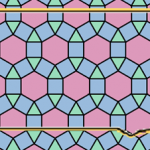South Dakota will recarve its Legislative districts this year. Four bills before the Legislature seek to change that process.
House Bill 1075 would require that any district spanning five or more counties be divided into two single-member districts. We currently have two districts that are divided into two single-member subdistricts: District 26 in south central South Dakota and District 28 in the northwest. Under the current district map, HB 1075 would split three more districts: District 6 (counties of Kingsbury, Hamlin, Codington, Clark, eastern Beadle), District 21 (Jones, Lyman, Buffalo, Brule, Charles Mix), and District 23 (Hyde, Faulk, Potter, Edmunds, Walworth, Campbell, and western McPherson).
HB 1090 takes HB 1075 a step further and calls for single-member districts statewide. That would mean half the travel and maybe half the expense for candidates for Legislature. Single-member districts would also end the amusing dynamic by which winning a seat in the State House is just a matter of being lots of people's second choice. HB 1090 has a larger bipartisan roster of sponsors than the more modest 1075.
Many of the legislators backing statewide single-member districts are also backing a major reform of how those districts are drawn. HB 1101 would create a bipartisan, non-legislative commission to draw the districts. The majority and minority leaders of the Senate and House each get to pick a commission member (Russ! Pick me! Pick me!). Those four commission members then pick three more people to join them. If they can't decide, the state's Chief Justice picks. The commissioners must come from seven separate regions: one from Minnehaha County, one from Pennington, and then one from each of five clumps of the remaining counties.
Once they get to work, the redistricting commission has to hold at least five public hearings on the redistricting plan it drafts, in Rapid City, Pierre, Sioux Falls, and two Indian reservation sites. The commission submits a draft plan to the Legislature by September 20 this year. The Legislature gets thirty days to make recommendations. The commission then gets thirty days to file its final plan with the Secretary of State, at which point it becomes law.
None of the redistricting commissioners can be current public officials. And none of them can run for Legislature in 2012. So if the majority and minority leaders are sharp, they could pick their toughest non-incumbent political opponents in their home districts and stave off a challenge on the 2012 ballot! What fun!

The fourth redistricting bill, HB 1121, takes aim at gerrymandering. HB 1121 looks quite literally for a square deal: it calls for more "regular" districts that that have sides as nearly equal in length as practicable." (Under that wording, we could also do equilateral triangles... or hexagons... or the rhombitrihexagonal scheme!) HB 1121 also calls for minimal crossing of existing county and municipal boundaries. That requirement might address a few of our whackier district shapes, like the inexplicably wiggly-jiggly District 3 and the skinny-stretchy Districts 4 and 8.
Even under these rules, some politicking would surely find some way into drawing Legislative boundaries. House Bills 1101 and 1121 each take useful steps toward ensuring some more fairness and participation in the districting and electoral process. House Bills 1075 and 1090 might allow some more gaming, slicing districts in half just so as to cut certain legislators off from strong voter blocs, but they would make it a little easier for representatives to cover ground and meet their constituents during campaigns and, more importantly, during the Legislative session.

As someone who works with census data for a living, I love redistricting season! There will never be a perfect solution to the problem, but it is fun to discuss. Balancing geography with the actual population distribution is a delicate act. I personally prefer HB1101 to all other options. HB1121 sounds really great until you actually start to look at the population distribution vs. geography issue.